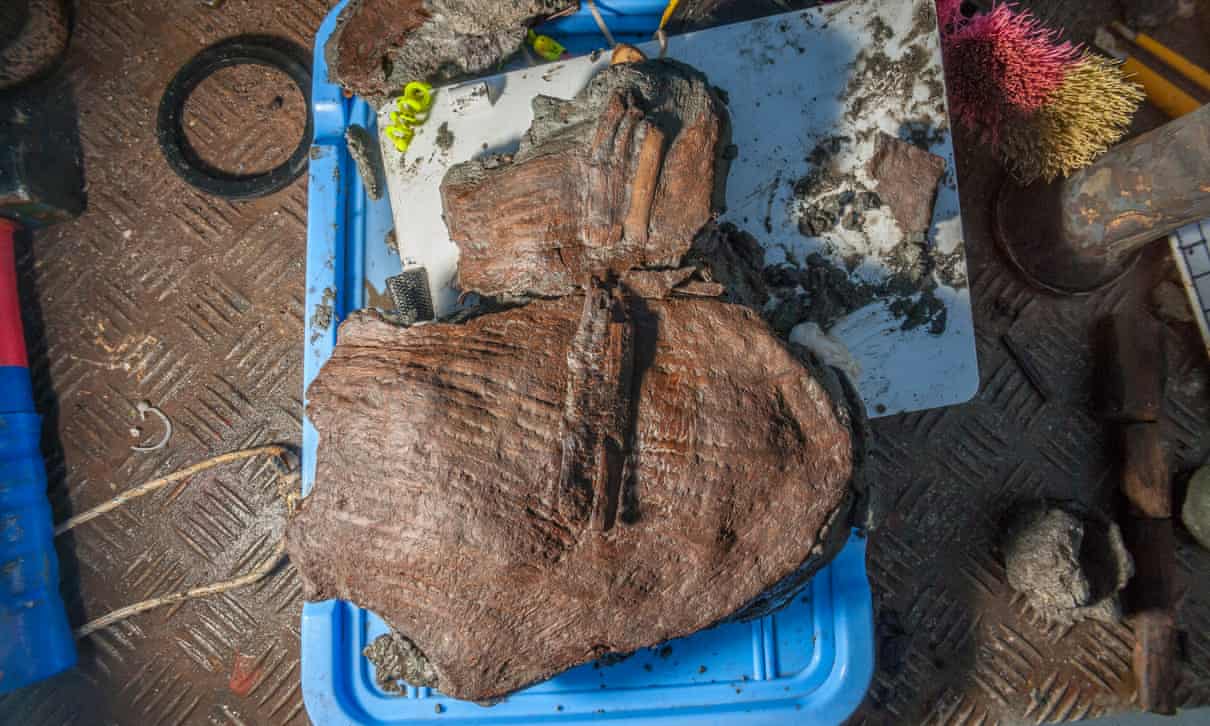Fruit Baskets from an Ancient Egyptian City Discovered Underwater

Fruit Baskets from an Ancient Egyptian City Discovered Underwater
Hundreds of antique ceramic artefacts and bronze treasures have been unearthed in the submerged ruins of the near-legendary city of Thonis-Heracleion off the coast of Egypt, including baskets loaded with fruit dating from the 4th century BC.

They have remained undisturbed since the city sunk beneath the seas in the second century BC, then sank even deeper in the eighth century AD as a result of natural calamities like earthquakes and tidal surges.
Before Alexander the Great established Alexandria in 331BC, Thonis-Heracleion – the city’s Egyptian and Greek names – was Egypt’s biggest harbour on the Mediterranean for centuries.
However, the huge complex in Aboukir Bay in Alexandria was forgotten until it was rediscovered two decades ago by French marine archaeologist Franck Goddio, in one of the most significant archaeological finds in recent history.
Treasures from a wealthy civilisation trapped in time included colossal sculptures. In 2016, the British Museum hosted a large exhibition featuring some of the finds.
The recent finds have taken Goddio by surprise. The fruit baskets, he told the Guardian, were “amazing” since they had been undisturbed for almost 2,000 years.
They were still brimming with doum, the sacred fruit of an African palm tree to the Egyptians, as well as grape seeds.
He stated, “Nothing was disturbed.” “To have seen baskets of fruits was quite striking.”
One possibility for their survival, according to Goddio, is that they were placed in an underground chamber with a probable funeral connotation.
It’s in the same location that Goddio and his colleagues uncovered a large tumulus (a mound constructed atop burials) – roughly 60 metres long by 8 metres broad – as well as lavish Greek funeral gifts.
Thonis-Heracleion was home to Greek merchants and mercenaries in the early fourth century BC. At the mouth of the Nile’s Canopic branch, the city commanded the Egyptian border. During the late Pharaonic dynasty, the Greeks were allowed to settle there and build their own temples.
“It’s a type of island encircled by channels,” Goddio remarked of the tumulus. We discovered an incredible amount of bronze deposits in those waterways, including several statuettes of Osiris [the ancient Egyptian fertility god].
“Something really different on the island. We discovered several hundred ceramic deposits. One on top of another. These are red-on-black figures from Attic, imported ceramics.”
Under the tumulus, there found huge numbers of tiny pottery — high-quality Ancient Greek specimens, including amphorae – which adds to the intrigue. Mirrors and statuettes were among the bronze objects found around the tumulus.
Goddio also discovered considerable traces of burning, implying a “spectacular” event that resulted in visitors being prohibited from returning to the site. Despite the fact that the city lasted several hundred years, it appears to have been shut for hundreds of years, as none of the items discovered were older than the early fourth century.
He’s hoping to discover answers among the riches, which include the well-preserved remains of a wooden banquet sofa, a huge Attic vase, and a “exquisite quality” gold amulet.
The researchers also discovered a 25-meter-long Ptolemaic galley around 350 metres distant. While it is constructed in the classical style, with mortise-and-tenon joints, it also incorporates ancient Egyptian design elements, such as a flat-bottomed design that would have been ideal for navigation on the Nile and in the delta.
Goddio’s European Institute for Underwater Archaeology collaborates closely with Egypt’s ministry of tourism and antiquities, with the Hilti Foundation’s assistance. Before being shown in museums, the findings will be examined and maintained.
It’s exciting to think about what more may be discovered. Goddio thinks that just around 3% of the region has been investigated thus far, despite repeated excavations over the previous two decades.